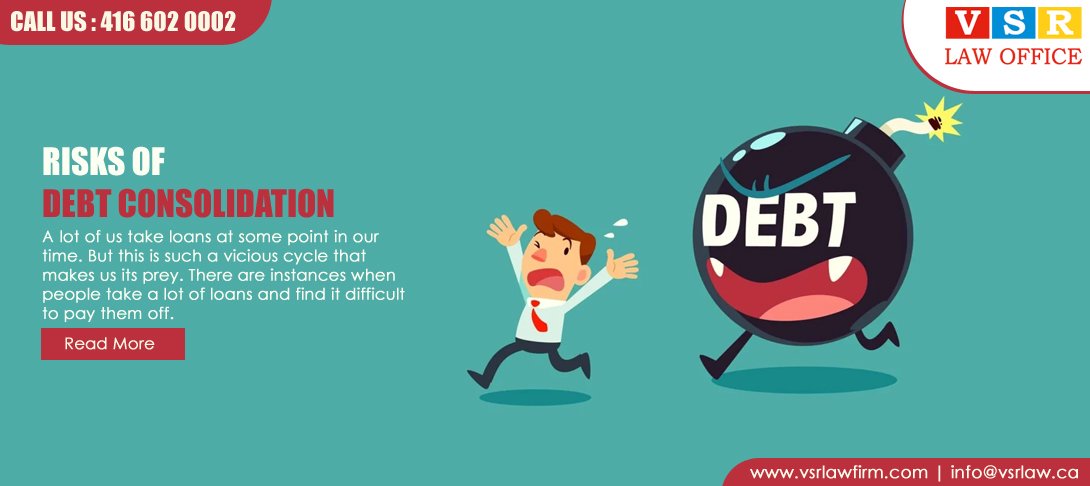
Risks of Debt Consolidation: A lot of us take loans at some point in our time. But this is such a vicious cycle that makes us its prey. There are instances when people take a lot of loans and find it difficult to pay them off. So the one strategy or way out they use is that they take one heavy loan to pay off the other ones. This is called debt consolidation.
Debt consolidation is a process of refinancing, which includes taking one loan to pay off the others. Some loans fall under the category of debt consolidation.
There is a term that we use with debt consolidation, which is debt settlement. Many of us are unaware of the difference between debt consolidation and debt settlement. Both are not the same.
Debt consolidation just helps the individual to pay off the pending loans. It does not reduce the loans or the number of creditors. On the contrary, debt settlement is the complete resolution of pending debts so that the person is free from creditors.
There are debt consolidation programs that help people get educated about such processes.
Types of Debt Consolidation loans
Debt consolidation loans are of various types. This includes the following:
- Secured loans
- Unsecured loans
We must have heard about the instances wherein people take up the loan and, in return, keep their house or property as a security asset. The asset works as collateral in the loan.
In unsecured loans, no asset can be used as a backup. Hence, it is difficult to obtain an unsecured loan. Moreover, unsecured loans have high rates of interest and low qualifying amounts.
Debt consolidation is not done like that. A process is supposed to be followed to achieve debt consolidation.
First, borrowers should have the income to get debt consolidation.
The borrower must qualify for debt consolidation. Then, you should have an excellent clear list of whom you want to pay first. Sometimes, the lender or the bank decides how you will repay your creditors and in what sequence.
Thereby, debt consolidation also affects the borrower’s credit score. The loan does not vanish. It remains there. The only difference here is that it changes into one single loan category rather than several loans.
If you are paying your payments on time, then there are chances that your credit score will increase drastically.
Risks of Debt Consolidation
People may think that debt consolidation is the best way out when there are a lot of loans to pay, but the fact we may forget is that the loan exists, and it is thereby risky. It is not a hundred percent safe and sound process to go by.
The risks associated with debt consolidation include the following:
- Fees
- Damage to credit score
- Potential to not receive enough low rates
- The high amount of interest rate
- Low qualifying amount
The possibility of losing the collateral one puts as an asset
- One can end up with more debt
- Associated mental stress
- The problem still exists. It is not a solution.
- Loan origination fees
- Balance transfer fees
- Closing costs
- Annual fees
- If you miss any payments, then it will be riskier than it was before
Conclusion
In conclusion, debt consolidation is a process of refinancing, which includes taking one loan to pay off the others. Some loans fall under the category of debt consolidation. This process can be risky, though. But if you pay all the payments on time and do all the documentation and steps correctly, it can help you resolve your problem.
Remember! Debt consolidation is not a solution.
Leave a Reply